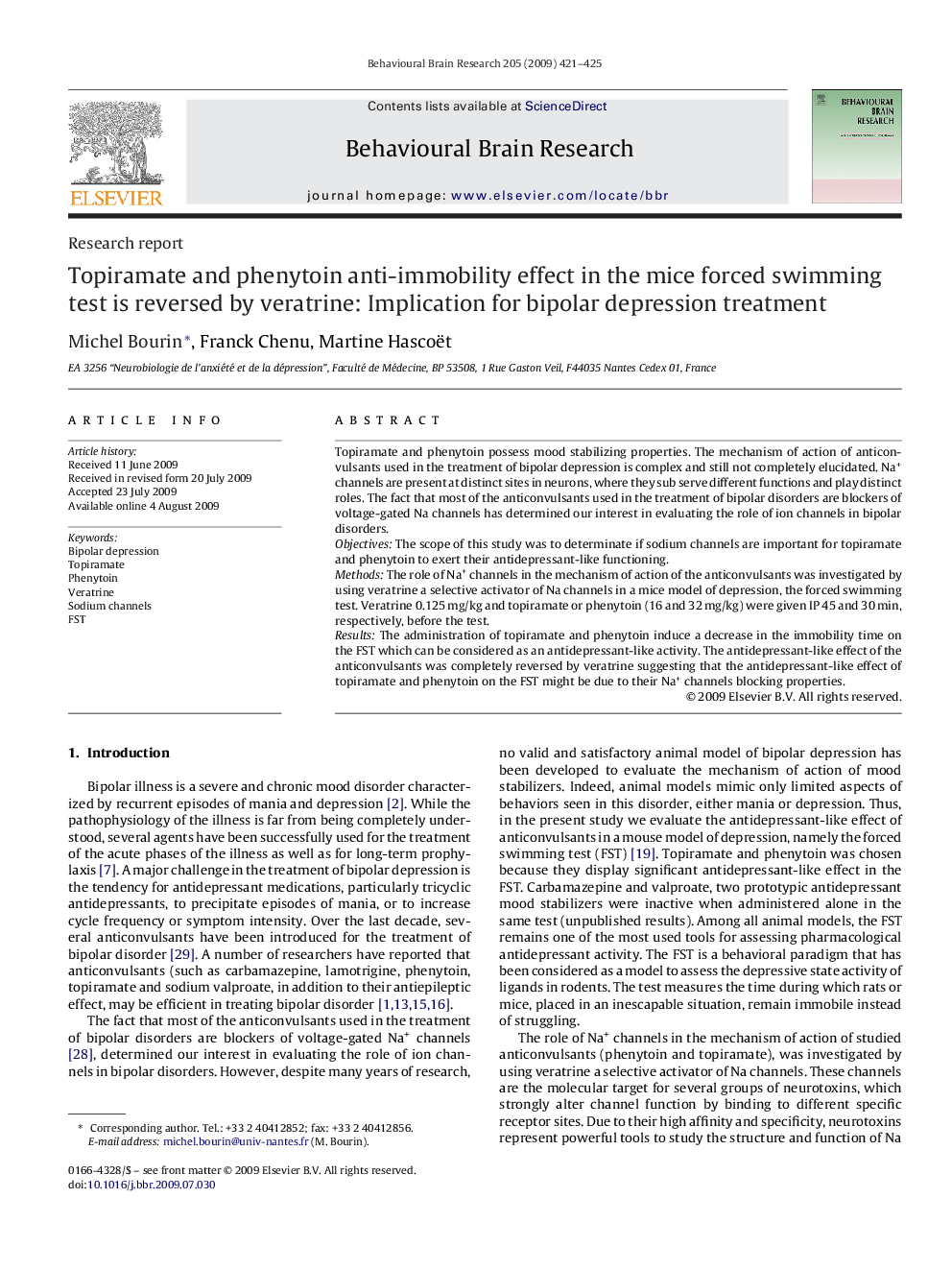| کد مقاله | کد نشریه | سال انتشار | مقاله انگلیسی | نسخه تمام متن |
|---|---|---|---|---|
| 4314414 | 1290035 | 2009 | 5 صفحه PDF | دانلود رایگان |

Topiramate and phenytoin possess mood stabilizing properties. The mechanism of action of anticonvulsants used in the treatment of bipolar depression is complex and still not completely elucidated. Na+ channels are present at distinct sites in neurons, where they sub serve different functions and play distinct roles. The fact that most of the anticonvulsants used in the treatment of bipolar disorders are blockers of voltage-gated Na channels has determined our interest in evaluating the role of ion channels in bipolar disorders.ObjectivesThe scope of this study was to determinate if sodium channels are important for topiramate and phenytoin to exert their antidepressant-like functioning.MethodsThe role of Na+ channels in the mechanism of action of the anticonvulsants was investigated by using veratrine a selective activator of Na channels in a mice model of depression, the forced swimming test. Veratrine 0.125 mg/kg and topiramate or phenytoin (16 and 32 mg/kg) were given IP 45 and 30 min, respectively, before the test.ResultsThe administration of topiramate and phenytoin induce a decrease in the immobility time on the FST which can be considered as an antidepressant-like activity. The antidepressant-like effect of the anticonvulsants was completely reversed by veratrine suggesting that the antidepressant-like effect of topiramate and phenytoin on the FST might be due to their Na+ channels blocking properties.
Journal: Behavioural Brain Research - Volume 205, Issue 2, 28 December 2009, Pages 421–425